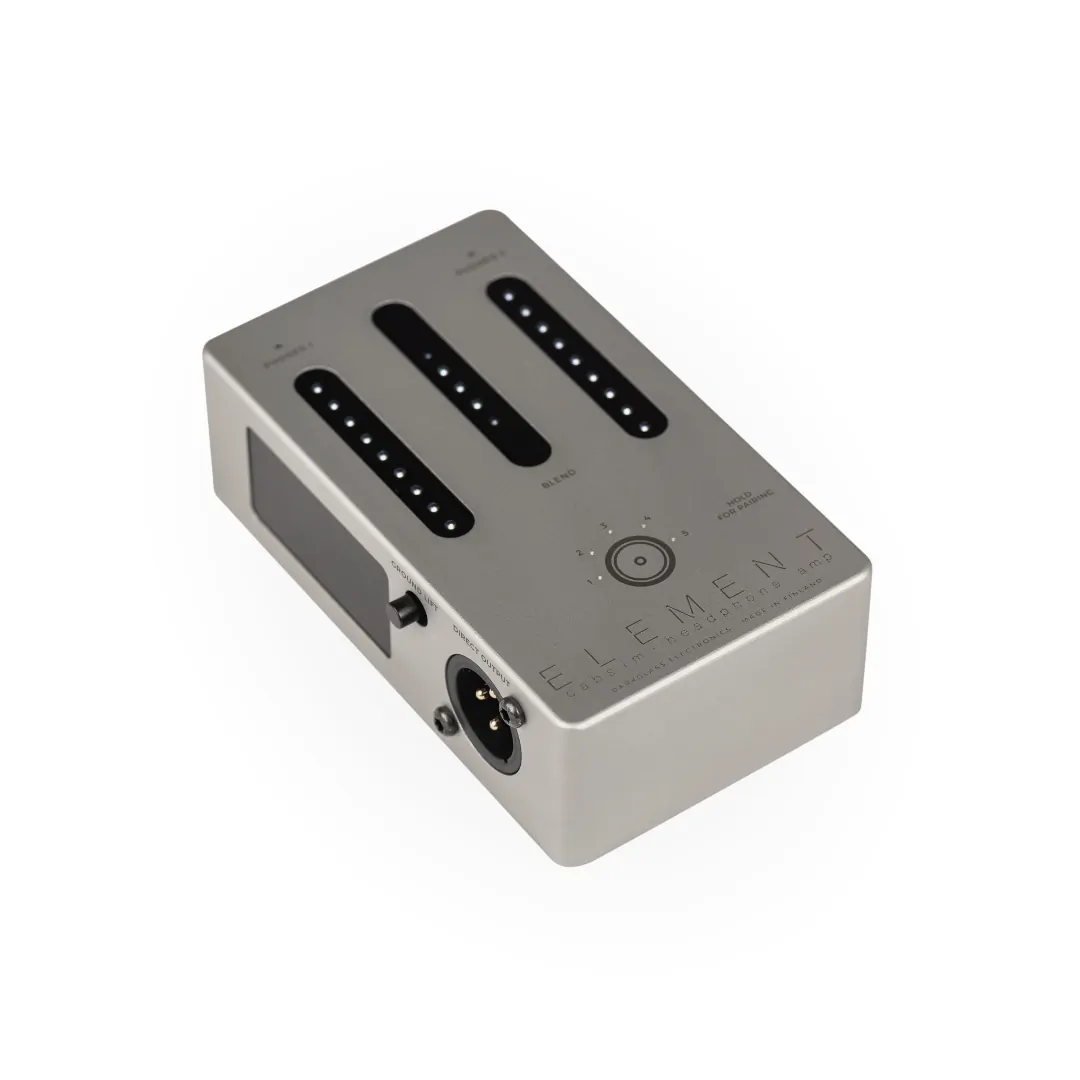Darkglass Element
One comprehensive device, that out of the box offers a bank of 5 cabinet simulations, and the ability to change them through the Darkglass Suite, a multi-channel USB-C audio interface, Bluetooth technology to listen to backing tracks while playing, rehearsing, or studying. Two headphone outputs to allow interaction among musicians. XLR output to connect the Element to your external audio interface or PA system. With a uniquely innovative approach, the Element provides in one device an immensely practical tool to empower modern musicians
Supplier
Darkglass
Darkglass
Classification
Pedals/Effects
Pedals/Effects
Specifications
Key Specs
Darkglass Suite APP
An application for desktop and mobile platforms that unlocks extra features on the Element, such as two different types of graphic EQs, tube power amp simulations, and access to a growing library of high-quality IR cabinet simulations. The desktop version also enables firmware updates and loading your own 3rd party cabinet simulations.
USB-C Audio Interface
Record your ideas wherever you are by connecting the Element to your PC or Mac (on macOS no drivers needed). The instrument input records on two tracks, one with cabinet simulation and one without any effects. Recording of stereo sources is also possible via the aux in. Independent mixes can be sent to the two headphone outputs from your favorite DAW
One USB-C port for enabling the audio interface feature, transferring impulse responses, and firmware updates.
Key Specs
Darkglass Suite APP
An application for desktop and mobile platforms that unlocks extra features on the Element, such as two different types of graphic EQs, tube power amp simulations, and access to a growing library of high-quality IR cabinet simulations. The desktop version also enables firmware updates and loading your own 3rd party cabinet simulations.
USB-C Audio Interface
Record your ideas wherever you are by connecting the Element to your PC or Mac (on macOS no drivers needed). The instrument input records on two tracks, one with cabinet simulation and one without any effects. Recording of stereo sources is also possible via the aux in. Independent mixes can be sent to the two headphone outputs from your favorite DAW
One USB-C port for enabling the audio interface feature, transferring impulse responses, and firmware updates.
